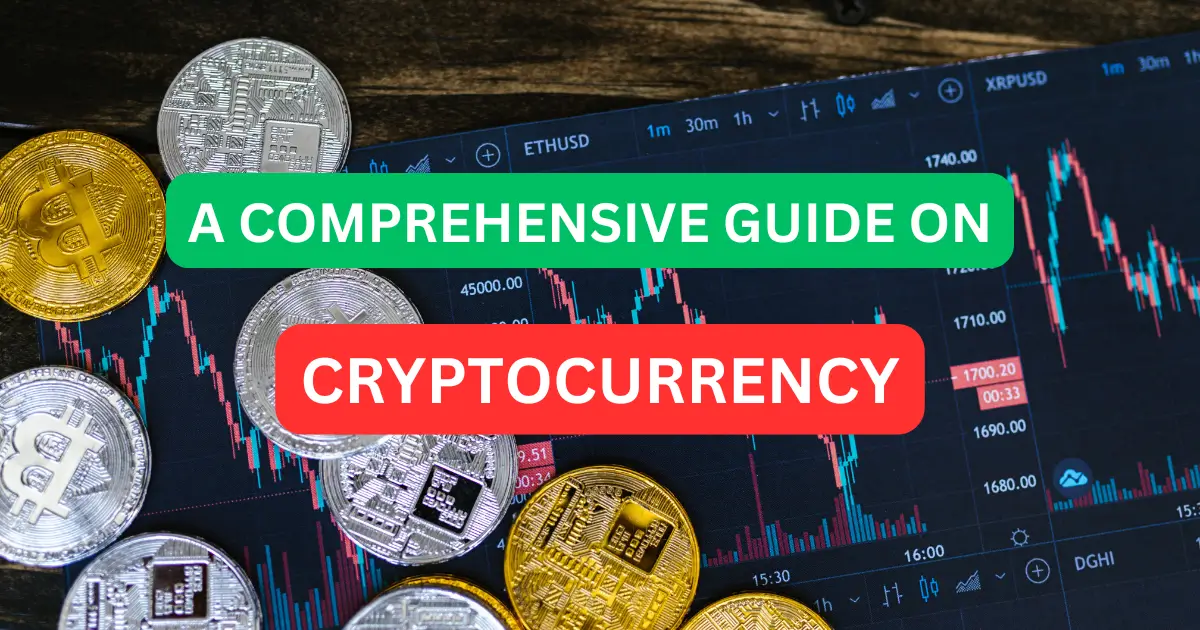Table of Contents
Cryptocurrencies have revolutionized the financial landscape, yet they are not without risks. Among these risks are crypto bubbles, which have become a defining feature of the digital asset market. This article explores the phenomenon of crypto bubbles, their formation, historical examples, their impact on investors, and their correlation with market regulations. In examining crypto bubbles, we hope to provide insights into their implications for investors and the broader cryptocurrency ecosystem.

Definition and Characteristics
Crypto bubbles occur when the prices of cryptocurrencies rise rapidly and unsustainably, often driven by speculative trading and market enthusiasm. These bubbles are typically marked by a dramatic escalation in prices, leading to peaks followed by steep declines. The excitement surrounding these price surges often leads to increased media coverage, which in turn attracts more investors, creating a cycle of speculation. The key characteristic of a crypto bubble is the discrepancy between a cryptocurrency’s market value and its intrinsic worth, primarily fueled by investor excitement rather than fundamental growth.
When a crypto bubble forms, several signals often emerge, including accelerated price growth and heightened investor confidence. This overconfidence can lead to irrational decision-making, where market participants engage in herd behavior, buying in anticipation of continued price increases. However, when market sentiment reverses, the inflated prices collapse, causing significant losses for many investors. Understanding these dynamics can help market participants recognize the risks associated with investing during bubble periods.
– Rapid price increases without corresponding growth in cryptocurrency value.
– Significant media and investor attention leading to speculative buying.
– Discrepancy between market value and intrinsic worth.
– Investor enthusiasm overriding rational analysis.
– Historical pattern of boom-and-bust cycles in asset prices.
By understanding the definition and characteristics of crypto bubbles, investors can better navigate the volatile terrain of the cryptocurrency market and make informed decisions.
Historical Examples
Examining historical crypto bubbles offers valuable insights into the cyclical nature of these phenomena. Notable examples include the 2017 Bitcoin surge, where prices soared to nearly $20,000 only to crash by more than 60% in a few months. These historical occurrences illustrate the typical boom-and-bust cycles inherent to crypto bubbles. Similarly, the 2018 “crypto winter” saw a massive market correction, wiping out billions in market value as investor sentiments shifted.
These past events highlight the rapid rise and fall patterns associated with crypto bubbles. During these periods, euphoria often overtakes fundamental analysis, leading investors to pour money into digital assets with little regard for underlying technologies. As prices climb, regulatory scrutiny increases, often contributing to the eventual downturn when reality sets in. These fluctuations emphasize the importance of learning from past bubbles to better prepare for future market developments.
– 2013 Bitcoin Crash: Bitcoin’s price skyrocketed to over $1,000 before plummeting, highlighting cryptocurrency volatility.
– 2017 Bitcoin Surge: Prices reached unprecedented highs but dropped sharply, marking a classic crypto bubble.
– 2018 ICO Craze: Numerous projects raised funds through Initial Coin Offerings, leading to instability and regulation.
– 2021 Dogecoin Rally: Driven by social media and celebrity endorsements, Dogecoin’s surge exemplifies speculative mania.
– 2018 Crypto Winter: Significant market value loss prompted a reassessment of cryptocurrency’s viability.
These historical instances underscore the potential for rapid financial gains and equally swift losses, influencing investor behavior and prompting regulatory responses.
Factors Driving Bubbles
Several key factors contribute to the formation and bursting of crypto bubbles. Speculation, driven by the desire for quick profits, is a primary catalyst for these rapid price increases. Media hype further amplifies this behavior by drawing attention to promising assets, often creating a fear of missing out (FOMO) among investors. As more participants enter the market, prices become inflated, leading to unsustainable growth.
Moreover, the psychological element of herd behavior plays a significant role, where individuals follow the crowd despite lacking substantial evidence of intrinsic value. This behavior is compounded by the highly unregulated nature of cryptocurrency markets, which allows for wide price fluctuations driven by sentiment rather than fundamentals. These conditions create an environment ripe for bubble formation, as new and seasoned investors alike are drawn into the frenzy.
– Speculative trading and expectation of quick profits.
– Media hype generating widespread attention and FOMO.
– Herd behavior leading to collective investment decisions.
– Inherent market volatility and lack of regulation.
– Rapid influx of investors driving asset price inflation.
Understanding the factors driving crypto bubbles is crucial for investors to recognize signs of a forming bubble and make prudent decisions amidst market euphoria.
Impact on Investors
The impact of crypto bubbles on investors can be profound, presenting both opportunities and risks. During the ascent of a bubble, investors may experience significant financial gains, enticing more participants into the market for potential rewards. However, the subsequent burst can lead to substantial financial losses as prices collapse and market confidence wanes.
Investors caught in the throes of a bubble may struggle with decision-making as emotions run high. The euphoria of rising prices can lead to overextended positions, while the panic of a downturn may cause rash sell-offs at significant losses. This volatile environment underscores the importance of a well-structured investment strategy that accounts for both euphoria and downturns, promoting measured risk management even amidst unpredictable market conditions.
– Opportunities for rapid financial gains during bubble expansion.
– Significant financial losses when the bubble bursts.
– Emotional and psychological impact affecting decision-making.
– Importance of maintaining a disciplined investment strategy.
– Necessity for risk management and realistic expectations.
Investors must approach cryptocurrency markets with caution, especially during bubble periods, to protect themselves from the inherent risks and capitalize on potential opportunities.
Market Volatility and Regulation
The presence of crypto bubbles highlights the significant volatility of the cryptocurrency market, which can pose challenges for institutional and retail investors alike. This volatility often spurs discussions regarding the need for regulatory measures to protect market participants and ensure stability. As bubbles form and burst, the lack of regulation can leave investors vulnerable to extreme price swings and fraudulent activities.
In response to recurring bubble cycles, regulatory authorities are increasingly examining the crypto market. This scrutiny aims to implement safeguards such as investor protections, enforce compliance, and address potential market manipulation. While regulations can provide greater market stability, they may also lead to increased costs and complexity for crypto businesses. It is the balance of innovation and regulation that will shape the future trajectory of the cryptocurrency landscape.
– Heightened volatility demands cautious investor strategies.
– Debates on the need and extent of regulatory measures.
– Potential for regulations to provide market stability.
– Implications for crypto businesses navigating regulatory environments.
– Balance between fostering innovation and ensuring investor safety.
Engaging with ongoing discussions about market volatility and regulation is crucial for investors to adapt to the evolving cryptocurrency ecosystem and mitigate associated risks.
2020–2022 Cryptocurrency Bubble
The 2020–2022 period saw one of the most significant cryptocurrency bubbles to date, characterized by a rapid surge in market capitalization across digital currencies. Institutional interest, spurred by monetary stimulus and economic uncertainty, played a major role in driving this bubble. Alongside institutional interest was the rise of decentralized finance (DeFi) applications, capturing the imagination of developers and investors alike.
Heightened media coverage and the allure of decentralized finance sparked widespread public interest, attracting a large influx of retail investors. The excitement surrounding DeFi led to speculative trading, further inflating market prices. However, concerns regarding regulatory oversight and the environmental impacts of crypto mining began to attract scrutiny. This period of growth was abruptly curtailed by market corrections in 2022, highlighting the vulnerabilities inherent in speculative bubbles.
– Rapid increase in cryptocurrency market capitalization.
– Institutional interest fueled by economic stimulus and uncertainty.
– Rise of DeFi applications driving public and institutional interest.
– Regulatory concerns and environmental scrutiny surrounding mining.
– Significant market volatility following the bubble’s burst.
The 2020–2022 cryptocurrency bubble serves as a powerful reminder of the risks associated with speculative trading and the need for cautious optimism in the face of rapid market growth.
2020–2021 Bubbles
During 2020-2021, the cryptocurrency market experienced substantial investment surges often referred to as bubbles. These bubbles were marked by exponential growth in asset prices, driven by heightened market speculation. Public interest was at an all-time high, propelled by media coverage and enthusiasm from both seasoned and novice investors.
Influential figures and institutions endorsing cryptocurrencies played a crucial role in amplifying market participation and adding legitimacy to crypto investments. However, the swift escalation in prices and subsequent volatility raised concerns about the sustainability of these price levels, prompting caution among more experienced investors. The lessons learned from these bubbles underscore the importance of thorough research and informed decision-making in navigating the volatile crypto market.
– Exponential growth in cryptocurrency asset prices.
– Media coverage and public interest driving market enthusiasm.
– Endorsements from influential figures boosting investor confidence.
– Concerns regarding the sustainability of rapid price increases.
– Importance of cautious investment decisions in a volatile market.
This period reaffirmed the need for education and due diligence, highlighting that understanding market dynamics is essential to investing wisely in the cryptocurrency landscape.
2021–2024 Crash
The 2021–2024 crash marks a period of significant downturn in cryptocurrency markets, characterized by sharp declines in asset values. This crash followed a classic crypto bubble trajectory, where speculative trading and relentless media hype led to unsustainable price surges. As valuations hit unprecedented highs, regulatory pressure intensified, with crackdowns in various jurisdictions exacerbating market volatility.
This crash underscored vulnerabilities within the crypto ecosystem, particularly concerning security and market maturity. The rapid decline forced a reevaluation of the risks associated with speculative investments and emphasized the importance of due diligence. Investors faced significant challenges as the market corrected itself, highlighting the unforgiving nature of volatility synonymous with cryptocurrency trading.
– Sharp declines in cryptocurrency asset values due to speculative bubbles.
– Unsustainable price surges followed by regulatory scrutiny and crackdowns.
– Highlighted vulnerabilities in security and market infrastructure.
– Importance of due diligence and cautious investment practices.
– Challenges for investors navigating the highly volatile crypto environment.
The lessons of the 2021–2024 crash continue to resonate today, reminding investors of the inherent risks in crypto trading and the importance of market awareness.
What is a Crypto Bubble and How Does It Form?
A crypto bubble signifies a dramatic increase in the price of cryptocurrencies over a short span, typically driven by speculative trading and investor enthusiasm. Bubbles form when external excitement and media coverage inflate a cryptocurrency’s perceived value beyond its fundamental worth. A crucial driver of bubbles is herd behavior, where investors follow trends and whims rather than core financial analysis, exacerbated by the fear of missing out (FOMO) on substantial returns.
Price surges at the bubble’s onset attract additional investors, perpetuating a cycle of rising valuations. However, this artificial inflation is unsustainable and eventually leads to a market shift. As investor sentiment turns, a rapid sell-off occurs, causing a stark decline in prices. Recognizing these patterns is key to understanding and anticipating the dynamics of crypto bubbles in the digital asset market.
– Drastic price increases due to speculation and hype.
– Increasing investor enthusiasm and media attention.
– Herd behavior and FOMO driving market sentiment.
– Cycle of rising valuations attracting more investment.
– Market decline as sentiment shifts and sell-offs begin.
By understanding the lifecycle of crypto bubbles, investors can better navigate these formidable market challenges and strategize effectively for future opportunities.
2. How Can I Identify if a Cryptocurrency is in a Bubble?
Identifying a cryptocurrency bubble requires careful analysis of market indicators and investor sentiment. One significant sign of a bubble is an exponential increase in crypto prices, especially when such rises are not supported by significant technological advancements or widespread adoption. Monitoring the market for excessive optimism and unsubstantiated hype can also signal a potential bubble.
High trading volumes, disproportionate to historical averages, suggest speculative trading rather than genuine interest. Furthermore, a surge in market participation by inexperienced investors often correlates with speculative manias and bubbles. Finally, a proliferation of projects with similar value propositions may highlight an environment driven more by speculation than innovation.
– Exponential price increases without technological advancement.
– Excessive media and investor optimism and hype.
– High trading volumes compared to historical averages.
– Influx of new, inexperienced market participants.
– Emergence of numerous similar projects indicating speculation.
By recognizing these signs, investors can avoid the pitfalls of market speculation and engage in more informed, strategic crypto investments.
3. What Historical Examples of Crypto Bubbles Exist, and What Impact Did They Have?
The cryptocurrency landscape has witnessed several influential bubbles, each leaving a lasting impact. One early example is the 2013 Bitcoin crash, where the price soared to over $1,000 before plummeting, showcasing the extreme volatility of digital currencies. The 2017-2018 era saw a boom in Initial Coin Offerings (ICOs), with various projects raising funds rapidly, resulting in market instability and heightened regulatory scrutiny.
The 2018 cryptocurrency market crash, known as the “crypto winter,” resulted in significant market value loss and skepticism about the viability of digital assets. A notable modern example is the 2021 Dogecoin rally, propelled largely by social media and celebrity influence, emphasizing speculative behavior. These historical instances demonstrate both the potential for rapid financial appreciation and subsequent losses, shaping investor behavior and prompting regulatory measures in the crypto space.
– 2013 Bitcoin Crash: Significant price rise followed by a steep decline, highlighting volatility.
– 2017-2018 ICO Craze: Numerous fundraising projects, market instability, regulatory scrutiny.
– 2018 Crypto Winter: Massive market value loss, prompted reassessment of crypto’s viability.
– 2021 Dogecoin Rally: Social media-driven speculative surge, showcasing market exuberance.
– Influence on investor behavior and regulatory approaches over time.
These historical bubbles highlight crypto markets’ cyclical and unpredictable nature, yielding important lessons for investors and regulators alike.
4. What Are the Potential Risks of Investing During a Crypto Bubble?
Investing during a crypto bubble presents several risks stemming from inherent market volatility. One of the primary concerns is the exposure to extreme price fluctuations, potentially resulting in rapid and substantial changes in asset value. If the bubble bursts, investors stand to suffer significant financial losses, as inflated prices can swiftly plummet to unsustainable lows.
Investor behavior during bubbles is often marked by irrational exuberance and speculative decision-making, increasing the likelihood of misguided investments. While liquidity tends to be abundant during bubble expansion, it can vanish suddenly, hampering investors’ ability to exit positions effectively. Additionally, bubbles draw heightened regulatory attention, leading to sudden policy shifts that may impact market dynamics.
– Exposure to extreme market volatility and rapid price fluctuations.
– Potential for significant financial losses when bubbles burst.
– Risk of misguided investments driven by social media hype and celebrity endorsements, leading to unsustainable price surges and subsequent declines.
These historical events illustrate the recurring nature of crypto bubbles, underscoring the importance of due diligence and strategic planning when investing in digital assets. Investors can learn valuable lessons from these instances, such as avoiding hype-driven decisions and focusing on long-term potential rather than short-term gains.

Prasanth is an experienced crypto trader and writer with 5 years of expertise in blockchain technology, cryptocurrency markets, and trading strategies. He specializes in creating insightful, easy-to-understand content that helps readers stay informed about the latest trends, investment opportunities, and security best practices in the crypto space. With a deep passion for digital assets and a commitment to providing valuable, trustworthy information, Prasanth empowers both beginners and experienced traders to make informed decisions in the fast-evolving world of cryptocurrency.


